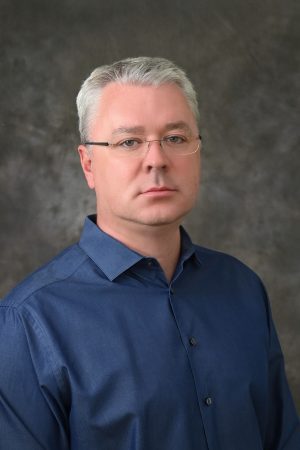KIRILL AFONIN, PH.D.

Kirill Afonin, PH.D.
Education:
- M.S.: Saint Petersburg State University Ph.D.: Bowling Green State University
- Post-doc: (NIH Research Fellow) National Institutes of Health; (Postdoctoral Fellow) University of California Santa Barbara
Field of Interest:
RNA Nanobiology and Drug Delivery
Research Focus:
My expertise is in computational and experimental RNA biology. Nucleic acids, including both DNA and RNA, are biopolymers that can be programmed to fold into nucleic acid nanoparticles (NANPs) that have beneficial uses in nanotechnology with broad applications. We are using this promising technology to pursue the following objectives:
1. Nanodesign—The goal of our studies is to correlate the folding and interacting principles of natural RNAs with their biological functions. We then apply this knowledge to combine the motifs in a rational way to form definite and functional RNA nanostructures with precisely controlled and fine-tunable properties. We also focus on engineering novel bioresponsive materials and hydrogels.
2. Immunology—The immunotoxicity and immunomodulatory effects of NANPs are poorly understood and have been one of the major impediments in bringing NANPs to clinical trials. We have explored how the optimization of size, shape, and composition of NANPs affects immune stimulation.
3. Delivery—The broader therapeutic use of NANPs is diminished by their inability to cross biological membranes due to the negative charge of nucleic acids and their rapid degradation by nucleases in the bloodstream. We aim to investigate possible ways to use synthetic carriers to overcome this barrier.
4. Biosensing—By utilizing nanomaterials in biosensor development, we aim to increase the sensitivity of analysis through a myriad of sensors, including programmable nanoprobes and nanopore sensing.
5. Therapeutics— Multiple clinical trials with several FDA approvals have demonstrated the great potential for RNA pharmaceuticals. We aim to further develop RNA nanoparticles that have a potential to actively self-assemble and further identify, target, and eliminate diseases.
6. Dynamic structures—The development of nucleic acid-based logic gates and switches provide conditionally-activated pathways which can simultaneously sense and eliminate targeted diseases. In designing NANPs which can dynamically interact and communicate with one another and their environments, we aim to utilize these structures as multi-tools of nanotechnology.